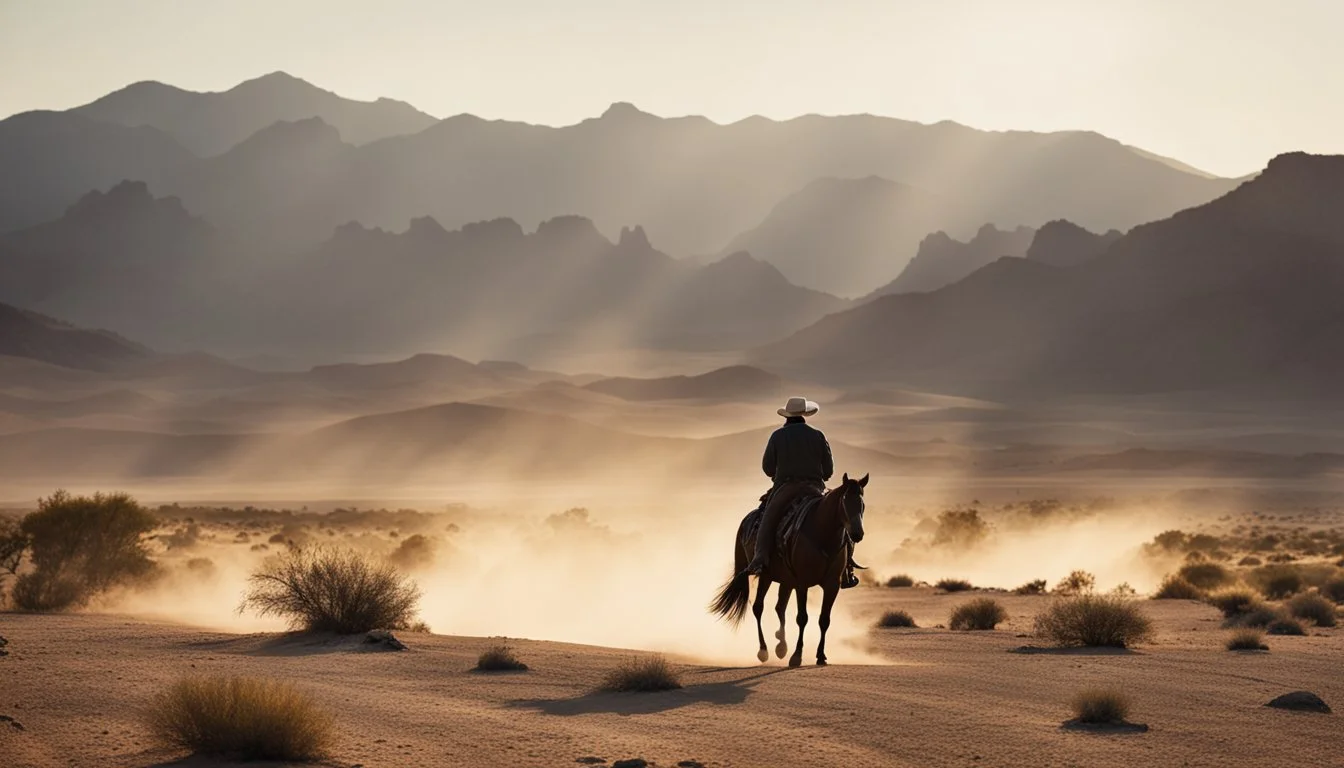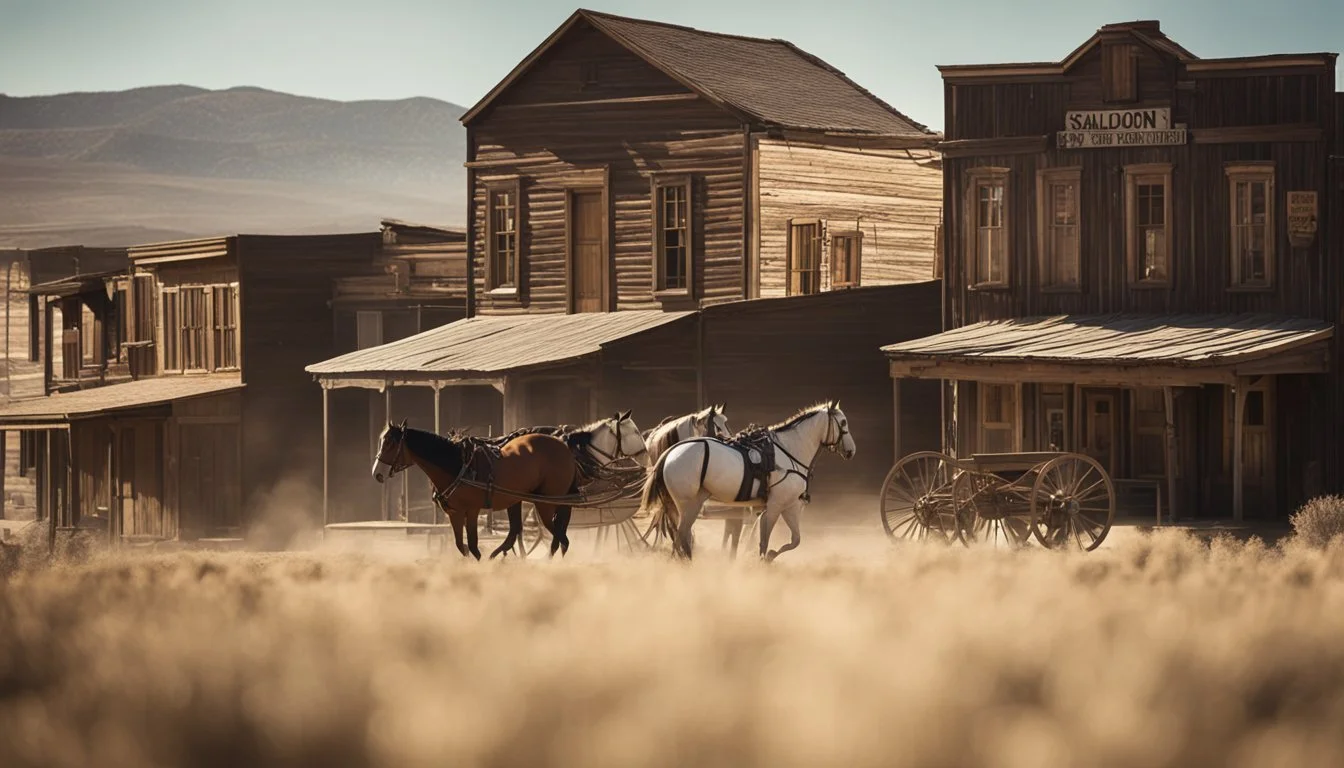7 Billy the Kid Documentaries That Separate Fact from Fiction
Unveiling the True Story of the Wild West Legend
Billy the Kid remains one of the most legendary figures of the American Old West, captivating audiences with tales of his exploits for over a century. Documentaries have played a crucial role in examining the life and legacy of this infamous outlaw, sifting through historical records to separate myth from reality.
These films provide viewers with a more accurate understanding of Billy the Kid's true story, challenging popular misconceptions and revealing lesser-known facts about his short but impactful life. By exploring primary sources, expert interviews, and historical locations, documentaries offer a nuanced perspective on the man behind the legend, illuminating the complex social and cultural factors that shaped his path to notoriety.
1) "Billy the Kid: New Evidence" (2015)
This documentary explores a remarkable discovery made in 2010. Collector Randy Guijarro purchased a tintype photograph for $2 at a California memorabilia shop.
Upon closer inspection, the image appeared to show Billy the Kid playing croquet with his gang, the Regulators. This finding sparked an intensive investigation to verify the photograph's authenticity.
The film follows Guijarro's journey as he seeks to confirm the tintype's historical significance. Experts analyze the image, comparing it to known photographs and historical records.
The documentary presents compelling evidence supporting the photograph's legitimacy. It examines the clothing, weapons, and other details visible in the image to corroborate its connection to Billy the Kid.
"Billy the Kid: New Evidence" offers viewers a fascinating look at how modern technology and historical research can shed new light on legendary figures from the Old West.
2) "Billy the Kid: An American Tale" (2016)
This documentary film explores the life and legacy of Billy the Kid through a blend of historical accounts and dramatic reenactments. Directed by Chris Graves, it aims to separate myth from reality in the outlaw's story.
The film examines Billy's early years, his involvement in the Lincoln County War, and the events leading to his death. It features interviews with historians and experts who provide context and analysis of the era.
"Billy the Kid: An American Tale" delves into the social and political climate of the Old West, offering insights into the factors that shaped Billy's life and choices. The documentary also explores his relationships with key figures like Pat Garrett and John Tunstall.
Through archival photographs, newspaper clippings, and court records, the film presents a comprehensive look at the historical evidence surrounding Billy the Kid. It challenges some popular misconceptions while acknowledging the enduring mystery of certain aspects of his life.
3) "The Authentic Life of Billy, the Kid" (1882)
"The Authentic Life of Billy, the Kid" is a book written by Pat Garrett, the sheriff who famously shot and killed Billy the Kid. Published in 1882, it serves as both a biography and a first-hand account of the notorious outlaw's life and death.
Garrett collaborated with ghostwriter Marshall Ashmun "Ash" Upson to produce this influential work. The book provides detailed insights into Billy the Kid's activities, personality, and the events leading up to his demise.
As one of the earliest accounts of Billy the Kid's life, this book played a significant role in shaping the public's perception of the legendary gunslinger. It combines factual information with dramatic storytelling, blurring the line between history and myth.
While the book claims to be authentic, some historians question its complete accuracy. Garrett's personal involvement in the events he describes may have influenced his portrayal of Billy the Kid and the surrounding circumstances.
Despite its potential biases, "The Authentic Life of Billy, the Kid" remains a crucial primary source for researchers and enthusiasts interested in separating fact from fiction in the Billy the Kid legend.
More information on "The Authentic Life of Billy, the Kid"
4) "Billy the Kid: The Endless Ride" (2007)
"Billy the Kid: The Endless Ride" is an audiobook by historian Michael Wallis. It offers a fresh perspective on the life of the infamous outlaw William H. Bonney, better known as Billy the Kid.
Wallis spent years researching and recreating the story of Billy the Kid (1859-1881). The book aims to separate fact from fiction, presenting a more nuanced portrait of the legendary figure.
The audiobook explores Billy's short but eventful life, from his humble beginnings to his rise as a notorious outlaw. It examines the social and historical context that shaped his actions and reputation.
Wallis challenges some of the popular myths surrounding Billy the Kid, while acknowledging the elements of truth within the legends. The narrative provides a balanced view of the young man who became a symbol of the Wild West.
More information on "Billy the Kid: The Endless Ride"
5) "Billy the Kid: His Real Name Was..." (2020)
This documentary explores the true identity of the infamous outlaw Billy the Kid. It delves into historical records and eyewitness accounts to uncover his real name and background.
The film examines evidence suggesting Billy's birth name was Henry McCarty. It traces his early life and the circumstances that led him to adopt aliases like William H. Bonney.
Interviews with historians and researchers provide insight into Billy's family history and upbringing. The documentary analyzes documents from the time period to piece together his true origins.
Viewers learn about Billy's childhood in New York and his eventual move to the American Southwest. The film discusses how he became involved in the Lincoln County War and gained notoriety.
Through careful investigation, this documentary aims to separate myth from reality regarding Billy the Kid's identity. It presents a factual account of his life based on available historical evidence.
More information on Billy the Kid
6) "Arthur Penn's Billy the Kid and Hollywood"
Arthur Penn's 1958 film "The Left Handed Gun" marked a turning point in Billy the Kid's cinematic portrayal. Penn cast Paul Newman as the outlaw, departing from the typical Western hero image.
The film explored Billy's psychology and motivations, presenting a more complex character than previous Hollywood depictions. Penn's direction emphasized the Kid's inner turmoil and difficult upbringing.
"The Left Handed Gun" challenged audience expectations by portraying Billy as a troubled youth rather than a simple villain or hero. This nuanced approach influenced later Billy the Kid films and Westerns in general.
Penn's interpretation drew from historical accounts but took artistic liberties to create a compelling narrative. The film received mixed reviews upon release but has since gained recognition for its innovative approach.
By blending fact and fiction, Penn's work exemplified Hollywood's evolving treatment of historical figures. It paved the way for more thoughtful examinations of Wild West legends in cinema.
More information on "The Left Handed Gun" (1958)
7) "Young Guns: The True Story of Billy" (2012)
This documentary examines the life of Billy the Kid through a modern lens. It explores his transformation from a young troublemaker to a notorious outlaw.
The film uses historical records and expert interviews to separate fact from legend. It delves into Billy's early years and the events that shaped his path to outlawry.
Viewers gain insight into Billy's relationships with key figures like Pat Garrett and Governor Lew Wallace. The documentary also analyzes the political climate of 1870s New Mexico Territory.
"Young Guns" presents a balanced view of Billy the Kid's character. It highlights both his charisma and his violent tendencies, avoiding romanticization of his life.
The film incorporates reenactments to bring key moments to life. These scenes are interspersed with archival photographs and documents for historical context.
More information on "Young Guns: The True Story of Billy"
Historical Context of Billy the Kid
Billy the Kid emerged as a legendary figure in the American Old West during the late 19th century. His short life was marked by violence, conflict, and notoriety against the backdrop of frontier expansion and lawlessness.
Early Life and Origins
Henry McCarty, later known as Billy the Kid, was born in New York City in 1859. He moved west with his mother and brother following his father's death. After his mother's passing in New Mexico, the young Billy turned to petty crime and cattle rustling.
By his teens, Billy had gained a reputation as a skilled gunman. He adopted several aliases, including William H. Bonney. His slight build and youthful appearance earned him the moniker "the Kid."
Billy's early years shaped his outlaw persona. He drifted between frontier towns, working odd jobs and engaging in illicit activities. This period laid the groundwork for his later involvement in more serious conflicts.
The Lincoln County War
The Lincoln County War of 1878 catapulted Billy the Kid to infamy. This violent conflict pitted two rival factions against each other for economic and political control of Lincoln County, New Mexico.
Billy aligned himself with the Tunstall-McSween faction, opposing the powerful Murphy-Dolan group. The war escalated after the murder of Billy's employer, John Tunstall. Billy joined the Regulators, a vigilante group seeking revenge.
The conflict saw numerous shootouts and killings. Billy's skills as a marksman made him a key player. His participation in high-profile murders, including that of Sheriff William Brady, solidified his outlaw status.
The war's aftermath left Billy a wanted man. His exploits during this period became the stuff of legend, fueling his reputation as both a cold-blooded killer and a wronged young man fighting injustice.
Analyzing Film Accuracy
Documentary filmmakers face unique challenges when portraying Billy the Kid's life on screen. Historical records contain gaps and contradictions, leading to differing interpretations. Fact-checking plays a crucial role in separating truth from myth.
Documentary Filmmaker Perspectives
Filmmakers approach Billy the Kid documentaries with varying goals. Some prioritize entertainment, while others focus on historical accuracy. Many aim to strike a balance between engaging storytelling and factual integrity.
Directors often consult historians and primary sources to verify information. They may use reenactments to bring historical events to life, but must clearly distinguish between fact and speculation.
Interviews with experts provide valuable insights. These can include historians, archaeologists, and descendants of people involved in Billy the Kid's story.
Key Historical Inconsistencies
Several aspects of Billy the Kid's life remain disputed among historians. His birthplace is uncertain, with claims ranging from New York City to New Mexico. The exact circumstances of his father's death are also unclear.
Billy's real name is another point of contention. While commonly known as William H. Bonney, some believe his birth name was Henry McCarty.
The number of people Billy killed varies widely in different accounts. Popular legend often exaggerates this figure, while historical evidence suggests a lower count.
Documentaries must address these inconsistencies transparently. Presenting multiple viewpoints allows viewers to understand the complexity of historical research and interpretation.
The Legacy of Billy the Kid
Billy the Kid remains an enduring icon of the American Wild West. His short life as an outlaw and gunfighter continues to captivate people's imaginations over 140 years after his death.
The Kid's legacy is a mix of fact and fiction. He's often portrayed as a romantic rebel figure in popular culture, despite his violent criminal activities.
Many aspects of Billy the Kid's life are still debated by historians. The exact number of men he killed is disputed, with claims ranging from 4 to 21.
His involvement in the Lincoln County War cemented his place in Old West lore. This bloody conflict in New Mexico Territory shaped public perceptions of frontier violence and lawlessness.
Billy the Kid's dramatic death at age 21, shot by Sheriff Pat Garrett, added to his mythic status. Some even believe he survived and lived under an assumed identity.
Numerous books, films, and TV shows have dramatized the Kid's exploits. These portrayals have often blurred the line between historical fact and Western legend.
His legacy as an outlaw hero persists in modern times. Billy the Kid remains a symbol of youthful rebellion and the untamed spirit of the Old West.





